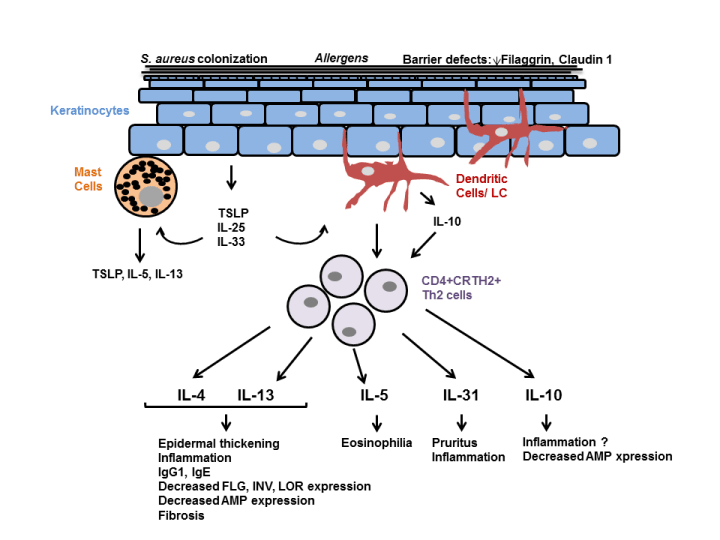
 |
| Figure 1: Schematic representation of Th2 cytokines in AD. Keratinocytes are activated upon exposure to allergens, bacterial proteins or mechanical injury. A defective epidermal barrier caused by decreased expression or production of non-functional barrier proteins are in important contributing factor. Activated keratinocytes then secrete TSLP, IL-25, and IL-33 that then act on mast cells and antigen presenting cells (dendritic cells or Langerhans cells (LC)). Activated mast cells secrete numerous cytokines, several of which are Th2 cytokines. The dendritic cells then trigger Th2 polarization and secretion of IL-4, IL-5, IL-13, IL-31, and IL-10. The Th2 cytokines have both unique and overlapping functions including increased epidermal thickening, sensitization, inflammation, pruritus, decreased expression of antimicrobial peptides (AMPs), and the barrier proteins filaggrin (FLG), loricrin (LOR) and involucrin (INV). The role of IL-10 in AD, particularly its induction of inflammation remains controversial. |